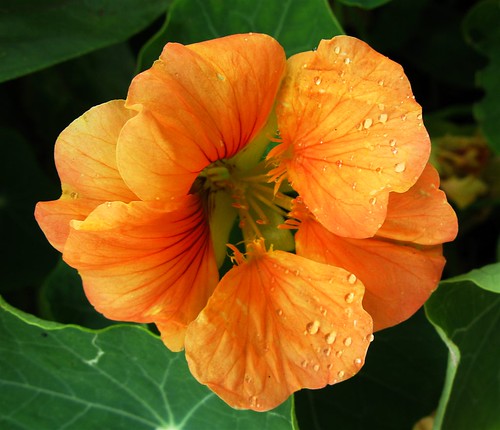 Photo and quoted text below courtesy of pennyeast
Photo and quoted text below courtesy of pennyeastWith the photography above I found this beautiful description of several uses for Nasturtium plant:
"Nasturtium flowers, leaves and immature seed pods have a tangy taste like water cress, and the colorful flowers really brighten up a green salad. Add some nasturtium flowers to an herb vinegar. The immature pods can be pickled. The mature seeds can be roasted for eating out of hand or used like black pepper.
Nasturtium has long been used in herbal medicine as a disinfectant and wound-healing herb, and as an expectorant to relieve chest conditions. All parts of the plant appear to be antibiotic and an infusion of the leaves can be used to increase resistance to bacterial infections and to clear nasal and bronchial catarrh. The remedy seems to both reduce catarrh formation and stimulate the clearing and coughing up of phlegm.
The leaves are antibacterial, antifungal, antiseptic, aperient, depurative, diuretic, emmenagogue, expectorant, laxative and stimulant. A glycoside found in the plant reacts with water to produce an antibiotic. The plant has antibiotic properties towards aerobic spore forming bacteria. Extracts from the plant have anticancer activity.
The plant is taken internally in the treatment of genito-urinary diseases, respiratory infections, scurvy and poor skin and hair conditions.
Externally it makes an effective antiseptic wash and is used in the treatment of baldness, minor injuries and skin eruptions. Any part of the plant can be used, it is harvested during the growing season and used fresh."
***

No comments:
Post a Comment